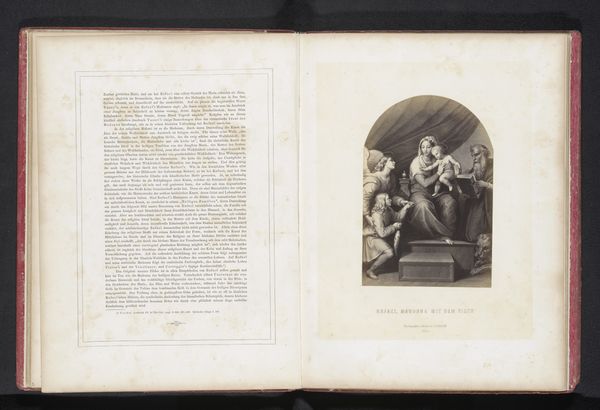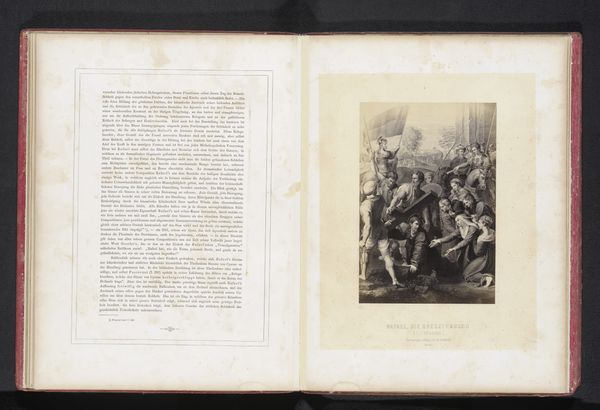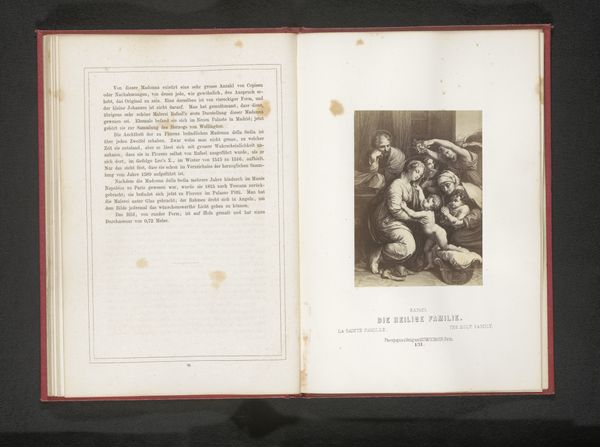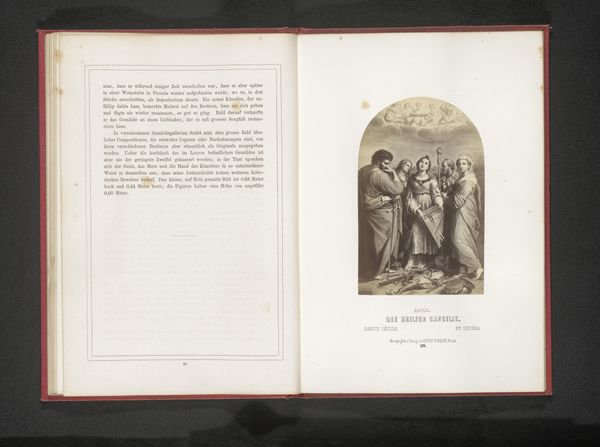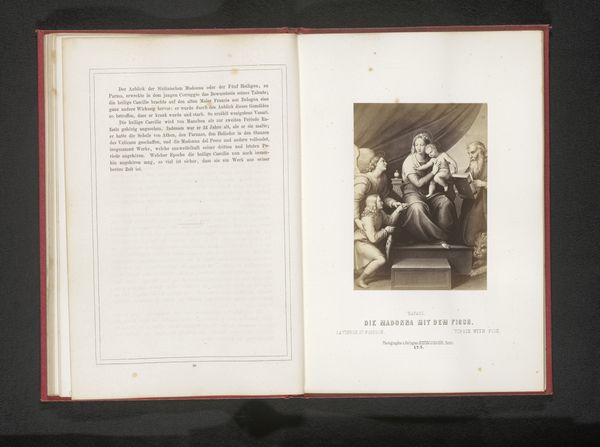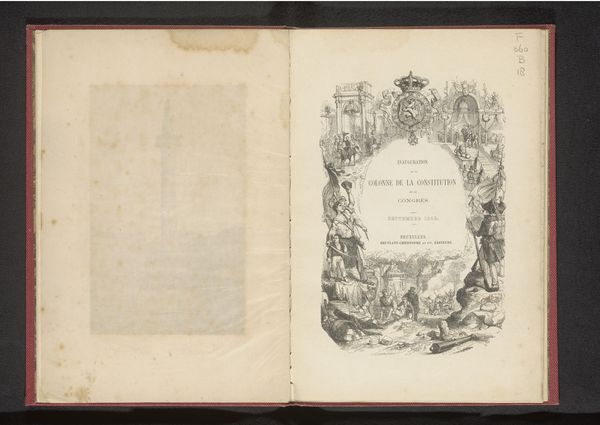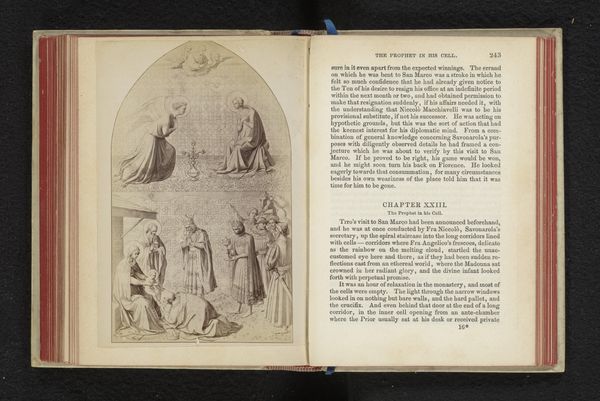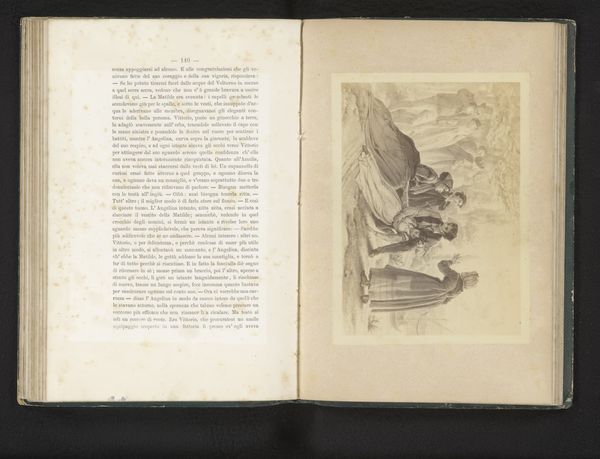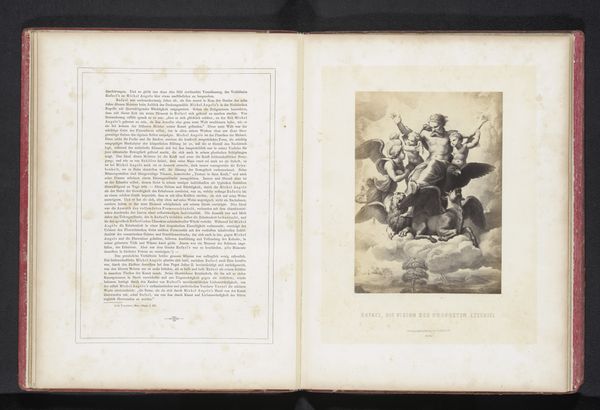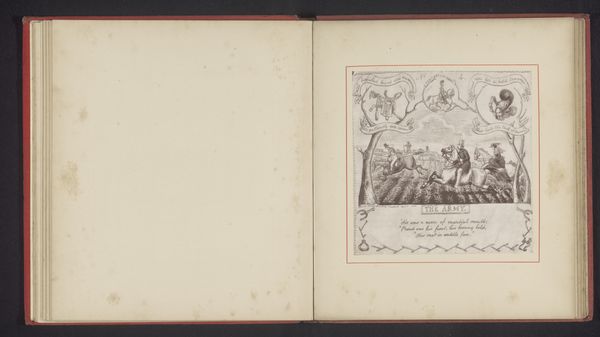
lithograph, print, paper
#
portrait
#
lithograph
# print
#
paper
#
coloured pencil
#
history-painting
#
italian-renaissance
Dimensions: height 187 mm, width 128 mm
Copyright: Rijks Museum: Open Domain
Editor: Here we have a lithograph from before 1861 after Raphael's "Marriage of the Virgin". It's amazing how much detail the artist, Gustav Schauer, was able to capture using this printmaking technique. The scene feels so balanced and serene, even in this reproduction. I am really intrigued by how the circle imagery echoes between the building and the ring. What do you make of this piece? Curator: The symbolic echo you’ve noted is spot-on. Notice how Raphael, and therefore Schauer, place the marriage at the foot of the temple. What temple do you think this might represent? Editor: Perhaps the Temple of Jerusalem? I see the classical architecture… is it intended to be read as Roman? Curator: Precisely. The temple is idealized. But, in this idealized architectural setting, the sacrament occurs not just within a holy place, but at a liminal space – the threshold to a new spiritual era, a synthesis of classical ideals and emerging Christian values. Editor: So, it represents both continuity and change, a bridge between the old and the new? The composition suggests it as well. Curator: Consider also the characters holding rods. In some versions of the story, the men carry rods that are meant to flower. It suggests not just a marital contract, but the blossoming of faith and the generative power of the divine. Editor: So even in the way the story is depicted, it highlights the way humans enact sacred tradition, with layers of embedded cultural meaning. It's wonderful to consider all the depth that lives within images that are carried across time. Curator: Precisely! Looking closer at how we portray traditions visually helps reveal the cultural memories that shape us. I learned that we need to pay more attention to where things touch and overlap!
Comments
No comments
Be the first to comment and join the conversation on the ultimate creative platform.

